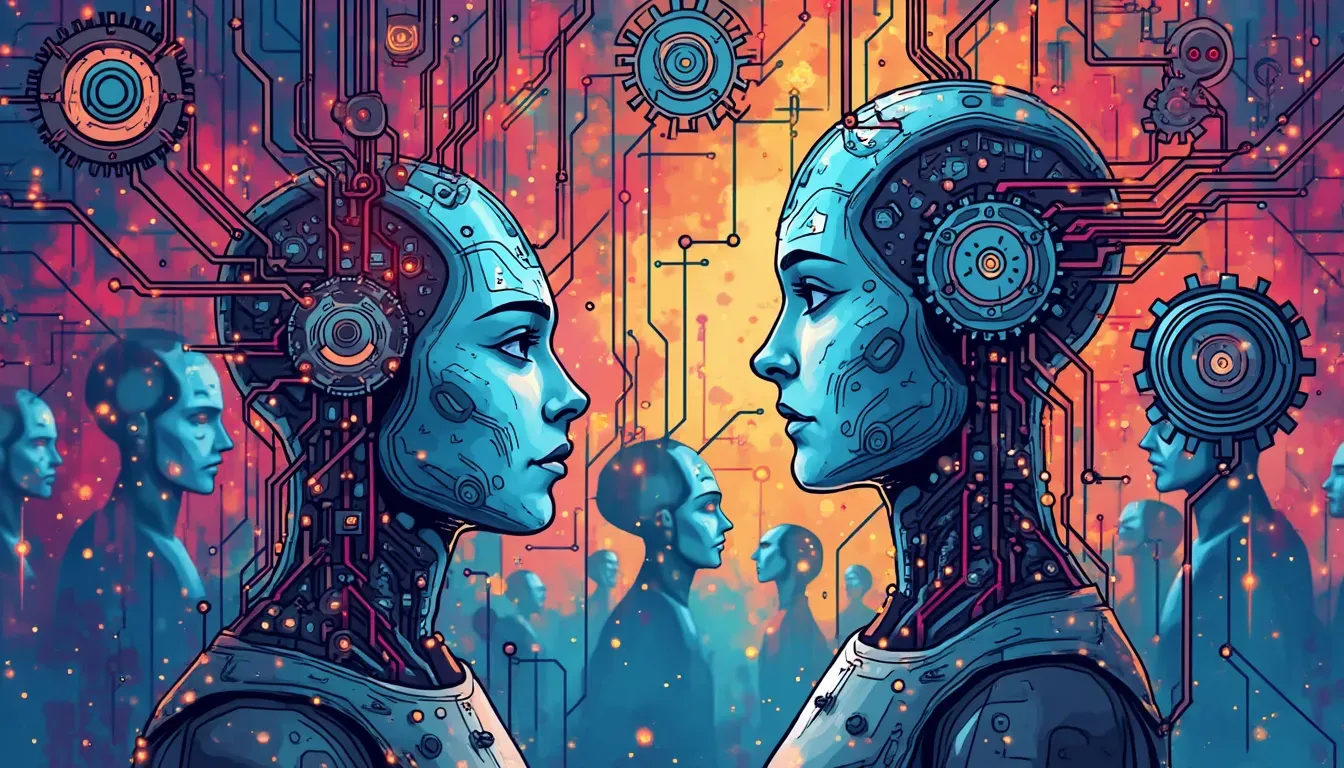Introduction to OpenAI and its Breakthroughs
At the forefront of artificial intelligence advancement, OpenAI has been pioneering innovations that promise to push technology boundaries further than ever before. With a significant breakthrough in 2024 concerning reasoning models, they transitioned from traditional chat models to what they define as their "O series" of models. The earlier advancements with ChatGPT launched them to global prominence, boasting over 300 million users, but the introduction of reasoning models marks a shift towards a more complex phase of AI development.
The Essence of Reasoning Models
Reasoning models expand beyond the confines of simple conversational AI, moving into the territory where these models help unravel complex problems and potential solutions. These models demonstrate an intriguing ability to mimic human thought processes, often visualizing multiple problem-solving paths, sometimes hitting dead ends, and retracing steps—a reflection of human-like cognitive processes.
"The essence of these reasoning models is not just to provide definitive answers but to explore possibilities, making the interaction more of an ongoing conversation."
Accelerated Innovation Pace
OpenAI's rapid development from the preview of O1 to the O3 models in a matter of mere months is a testament to the accelerating pace of innovation. Where traditional models like ChatGPT3 to ChatGPT4 required years, these new advancements underscore a distinct rise in agility and responsiveness within OpenAI.
Real Customers and Real Value
The shift to reasoning models is not just for academic interest. These advancements translate into tangible customer value. In sectors like pharmaceuticals, these models are already being utilized for deep research and drug discovery, reshaping how companies approach complex scientific inquiries.
One of the significant aspects of this transformation is how OpenAI envisions these models' future capacities: integrating into agent technology and acting as co-workers or advanced tools within a person's life and work environment.
Towards a Future with AI Agents
The evolution of AI reasoning will ultimately lead to "agentic technology"—a new era where AI agents assist humans in daily tasks, from complex job functions to mundane household decisions. Market sectors like software development, research labs, and customer service are potential precursors to broader implementation of such AI agents.
Potential Real-World Applications
Agents in logistics or personal life, like planning dinner logistics or automating mundane choices, liberate users from trivial decision paralysis and provide a seamless integration of technology into personal life management.
In the workforce, AI agents could significantly optimize areas such as customer relationship management, task automation, and even decision-making in complex sectors like finance.
Financial Path and Future Outlook
Funding and Profitability
Continuation and acceleration of AI innovation require vast resources, not just human talent but computing power and strategic financing. With over 300 million users, OpenAI's enterprise business model positions it well for sustainable revenue growth, supporting ongoing technological advancements.
The Role of IPO in OpenAI's Journey
While discussions about an IPO surface naturally as companies grow, OpenAI emphasizes that going public is not an endpoint but merely progress in its journey. This approach focuses on using an IPO as a means to further transparency, foster additional investment vehicles, and reinforce discipline without succumbing to short-term pressures.
Shaping a Public Benefit Corporation
Transitioning from a non-profit to a Public Benefit Corporation (PBC) aims to find the equilibrium between maintaining mission alignment and addressing economic goals necessary for sustained growth and development.
Challenges and Controversies
OpenAI's transition comes with its unique set of challenges. Regulatory scrutiny and external competition, especially from international players like Elon Musk, put pressure on how the company positions itself in the market. Despite these hurdles, the core mission remains focused on leveraging AI for humanity's broader benefit.
Global Policy and Infrastructure
Emphasizing the importance of international cooperation in AI development, OpenAI stresses the need for a robust infrastructure and supportive policy, especially considering the US-China technological rivalry.
Infrastructure's Role in AI
As articulated in their blue papers, infrastructure is decisive in AI deployment. By advocating for zones of economic development and nurturing educational partnerships, such as those with ASU and Oxford, OpenAI aims to bolster productivity while ensuring open global collaboration.
"Infrastructure is destiny," echoing the strategic foresight that should guide technological endeavors transcending geography.
The Role of Diversity and Inclusion
OpenAI also places an emphasis on diversity and inclusion within tech, understanding that gender diversity and varied perspectives catalyze innovation and tackle the homogeneity problem pervasive in tech industries.
Women's Role in AI
Given her background in engineering, OpenAI's executives serve not only as achievers but as role models for aspiring female technologists. Their efforts spotlight the critical importance of representation and mentorship necessary to navigate the traditionally male-dominated tech sphere.
Conclusion: The Path Forward
OpenAI's ongoing journey paints a picture of a future where AI is not only a tool but a transformational force adaptable within different facets of life. Their focus on reasoning models portrays a revolutionary leap towards AI that interacts, thinks, and learns like humans, blurring the lines between man and machine intelligently.
As OpenAI continues its exploratory advancements and institutional changes, their story illustrates the vibrant tapestry of technological innovation that promises to redefine the horizons of human possibility.
AGI, GLOBAL POLICY, OPENAI, IPO, INNOVATION, REASONING MODELS, AI AGENTS, YOUTUBE, AI

